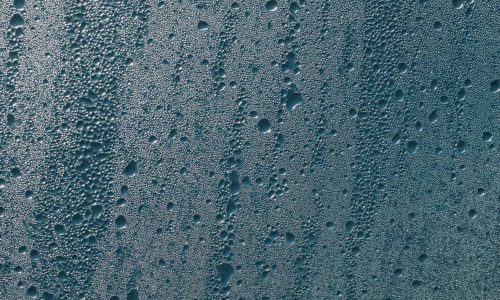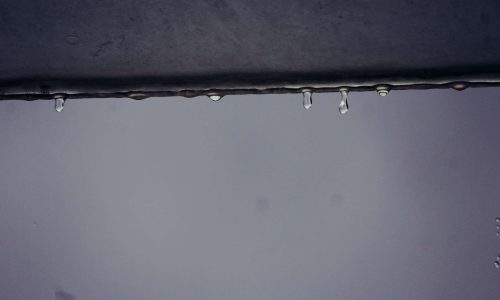As a homeowner, you may not think much about your HVAC system until something malfunctions. Water building up in your air conditioner isn’t uncommon but it can become a hazard to your system. The buildup of water can do more than just cause damage to the metal parts inside. Over time the water can decrease your unit’s efficiency and cause mold growth.
To prevent this, knowing how to get water out of AC units as soon as possible is important. Fortunately, there are many ways to remove water from your air conditioner.
In this article, we’ll cover what causes this issue and how to drain water from your air conditioner and keep it functioning properly.
Condensation in Air Conditioners: What You Need to Know

While cooling and dehumidifying a room, condensation occurs naturally in an AC unit. When warm air from your house enters the air conditioner, it flows over a low-temperature evaporator coil. Any moisture in the air condenses into water droplets as it comes into contact with the cold coil, effectively making the air much cooler as the air releases its heat.
In most cases, condensation simply drips off the outer surface of the vents and into a drain pan. Set under the evaporator coil, the pan collects the condensation that drops off the coil and then moves it outside of your house via a drain pipe or tube and away from your unit.
To better understand how to get water out of ACs, you’ll need to keep a closer eye on these external drain lines.
Identifying the Water’s Source
Before trying to remove water leaking from your air conditioning unit, find the water source first. By doing this, you can address the root cause and stop further damage.
If you can’t find the cause of the water through a visual check, it’s best to contact a professional like our HVAC team here at River Valley. We have the knowledge and specific equipment needed to easily find the source of the water leak and can even show you how to get water out of an AC unit.
Condensate drain line blockage
As the main part of an air conditioning system that removes water, the condensate drain line is responsible for removing the extra condensation that collects during the cooling process.
Once enough condensation builds, the drain line collects the water and safely empties it away from the air conditioner and your home. The condensate drain line is essential for preventing water damage from negatively affecting the AC’s functions.
With time, however, debris like dirt, dust, or algae can clog the condensate drain line. As a result, water starts to build up to the point where it can start backing up. Fortunately, condensate drain line cleaning is an easy fix. You can opt to do it yourself or call a pro.
A faulty condensate pump
HVAC systems use condensate pumps to remove water from the condensate drain pan. The pump usually has a sensor or float switch that observes the water level and is set up close to the drain pan. The pump turns on when the water level reaches a certain level and sends the water through a discharge pipe that typically connects to a drain or an outdoor location.
Much like the other parts mentioned, condensate pumps are necessary for efficient drainage, which could cause water damage or system failure. Yet, if the pump is faulty or broken, water buildup can easily happen. Fortunately, this is another quick fix. Simply fix or replace the condensate pump.
Frost on the evaporator coil
The evaporator coil is a key component that helps cool the indoor air. The air handler unit’s evaporator coil and condenser coil work together to make cooling easier.
The air handler’s fans draw warm air from the room which then passes over the cold evaporator coil. By absorbing heat from the air around it, the refrigerant in the coils expands. The ductwork and AC blower then send the cooled air back into the rooms.
However, the coil might still freeze if the air is too cold. The ice can often build up before melting once the air gets much warmer. The result is excess water that can cause damage since the water pools in places where it shouldn’t.
How to Remove Water from Your AC Effectively

It’s important to remember that water buildup in an AC unit is normal while it’s running because it’s a natural product of the cooling process.
However, if you notice too much water or ongoing water-related problems seek professional help from our team, especially for tips on how to get water out of air vents.
Condensate drain cleaning
Much like dealing with any clogged pipe, the best answer to how to get water out of ACs is to get rid of the clog itself.
Use a wet/dry vacuum or a pipe auger to unclog the condensate drain line on your AC unit. Remove any obstructions by just connecting your vacuum or pipe augur to the drain line. This makes it easier for the water to flow unhindered.
Condensate pump inspection
The best way to fix the condensate pump is to check it regularly. If your air conditioner has one, check for any obstructions or clogs, and confirm that the pump is powered.
Remove any obstructions then check to see if the problem continues. To make sure the pump is removing water properly again, clean or replace the pump as necessary.
Water inside the vents
Though it can be rare, water can still find its way into your vents and ducts. If condensation forms on the inside surfaces instead, it can even freeze or melt.
The only solution as to how to get water out of ac ducts is to use a wet/dry vacuum to get it out. If the water’s within reach, you can even use a sponge or something similar if you’re on a budget.
Schedule professional maintenance
To keep your AC unit functioning at its best, routine maintenance by a qualified HVAC technician is necessary. They can examine and clean all of the system’s parts, including the evaporator coil, condensate pump, and drain line. In many cases, the technician called can even remove any water that’s made its way into the AC – especially if you can’t get it out yourself.
Regular professional maintenance guarantees that any potential problems are found and fixed before they develop into water-related problems.
Need to remove water from your AC unit? Let River Valley help.
While some of these steps can be done on your own, consulting a professional is always the best option. With the right maintenance and help from our team at River Valley Air Conditioning, your air conditioner will continue to deliver cool, comfortable air without being affected by water or any other problems.
If at any point you need help with the process or if you just need a professional’s opinion, just contact our team at River Valley Air Conditioning.
